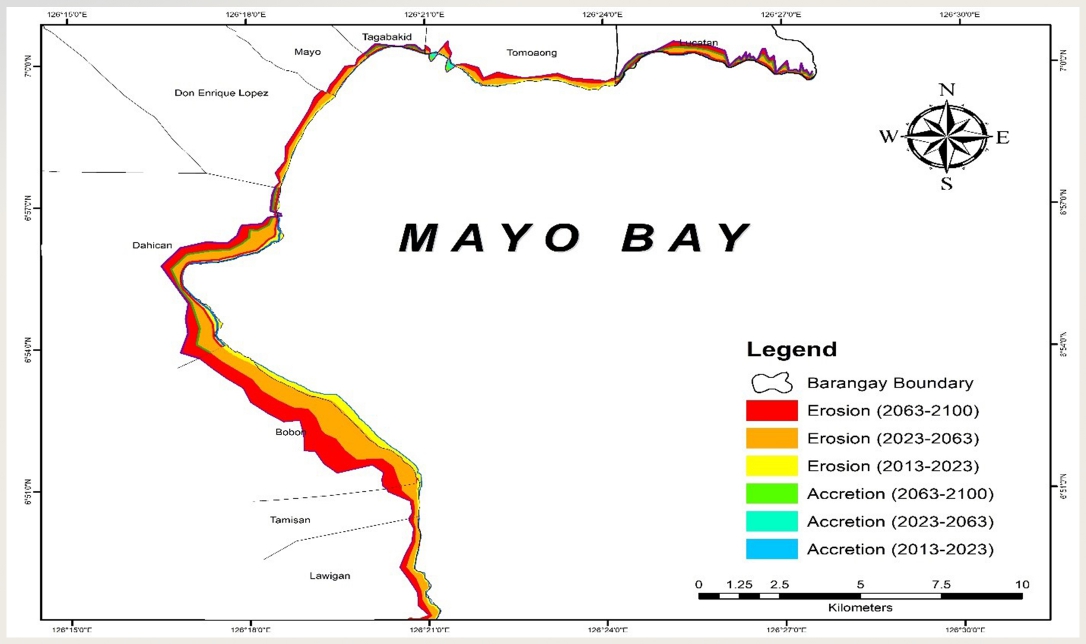Predicting the unseen: A shoreline shift analysis and prediction along Mayo Bay, Davao Oriental
DOI:
https://doi.org/10.59120/drj.v15i4.269Keywords:
Digital Shoreline Analysis System (DSAS), Erosion, Geographic Information System (GIS), Remote SensingAbstract
About 45%-60% of the world’s population resides in shoreline areas. Shoreline regions are one of the most vulnerable areas to the effects of global warming. Positions of shorelines are challenging to predict, but the trend of accretion and erosion can be determined using statistical and geospatial techniques. Mati City is a major tourist destination for white sand beaches and pristine waters. Shorelines along Mayo Bay are a source of income for the local community. However, Mayo Bay has been subjected to shifts due to erosion. This study aims to determine the trend of the shoreline shift in Mayo Bay from 2013 to 2023. Landsat 8 OLI satellite images are used in this study. Results reveal that most shorelines experienced erosion, with 97.26% erosion transects. The shoreline length has slightly increased by 0.08% from 2013 to 2023 and is predicted to increase by 3.57% in 2063 and 11.51% by 2100. Barangay Lucatan shows the highest shoreline expansion, while Barangays Bobon and Dahican exhibit the most erosion, with mean rates of -27.15 m/year and -23.60 m/year, respectively. With a classification accuracy of 89% and Root Mean Square Error (RMSE) of 0.05, the study provides a reliable basis for Mayo Bay’s shoreline management. The findings will inform erosion mitigation efforts and guide sustainable coastal management plans for at-risk areas.
Downloads

Downloads
Published
Issue
Section
License
Copyright (c) 2024 Fillmore D. Masancay, Lea A. Jimenez

This work is licensed under a Creative Commons Attribution-NonCommercial 4.0 International License.
DRJ is an open-access journal and the article's license is CC-BY-NC. This license allows others to distribute, remix, tweak, and build on the author's work, as long as they give credit to the original work. Authors retain the copyright and grant the journal/publisher non-exclusive publishing rights with the work simultaneously licensed under a https://creativecommons.org/licenses/by-nc/4.0/.





